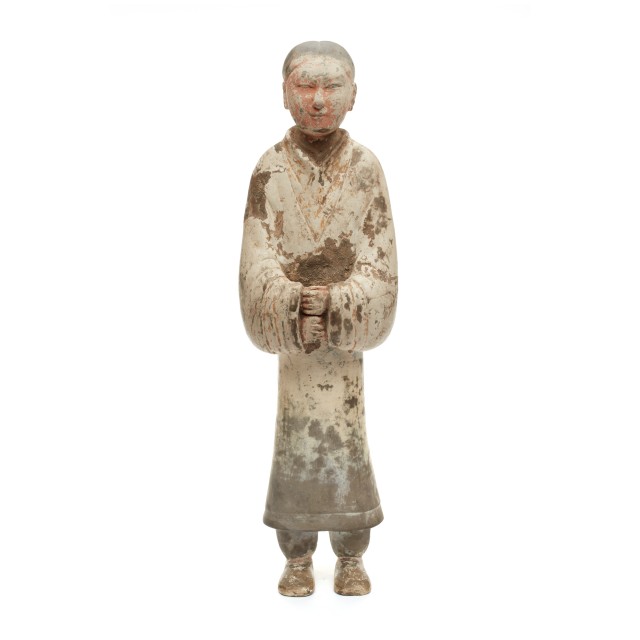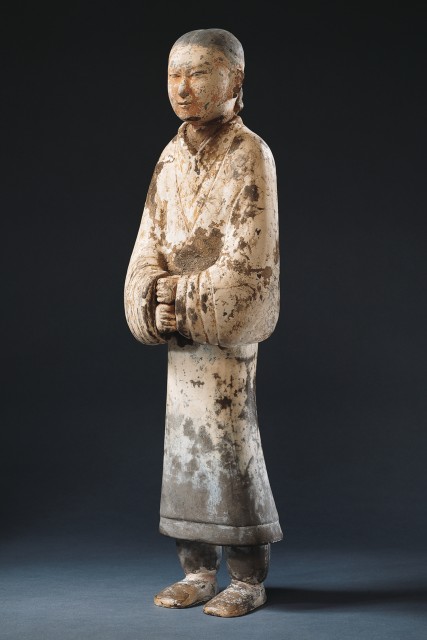Female Attendant

Photography by Synthescape, Digital image © Asia Society

Photography by Lynton Gardiner, Digital image © Asia Society
Female Attendant
2nd century BCE
North China
Earthenware with slip and traces of pigment
H. 21 1/2 x W. 6 x D. 5 in. (54.6 x 15.24 x 12.7 cm)
Asia Society, New York: Mr. and Mrs. John D. Rockefeller 3rd Collection, 1979.110
Provenance
John D. Rockefeller 3rd, New York, NY; acquired in 1977.
The Asia Society, New York, NY, bequest of John D. Rockefeller 3rd, New York, NY, 1979.
Licensing inquiries
Large retinues of warriors and attendants, as well as models of architecture and household goods, have been excavated from some of the sumptuous burials that date from the Han dynasty (206 B.C.E - C.E.220). This figure of a standing female attendant is notable for its elegant slimness and quiet pose. It is likely that the sculpture was once part of a larger retinue of attendants buried in the tomb of a high-ranking official. The figure's stillness reflects its position as an attendant, for warriors and entertainers from the same time are generally shown in livelier poses and with more animated features. The position of the woman's joined hands indicates they once may have held some type of object. Made of earthenware, this standing female was formed using a mold. Before firing, the entire figure was covered with a white mixture of clay and water (known as a slip); the traces of red pigment on the face and black pigment on the hair suggest this figure may once have been painted, giving it a more naturalistic effect than it has now.


